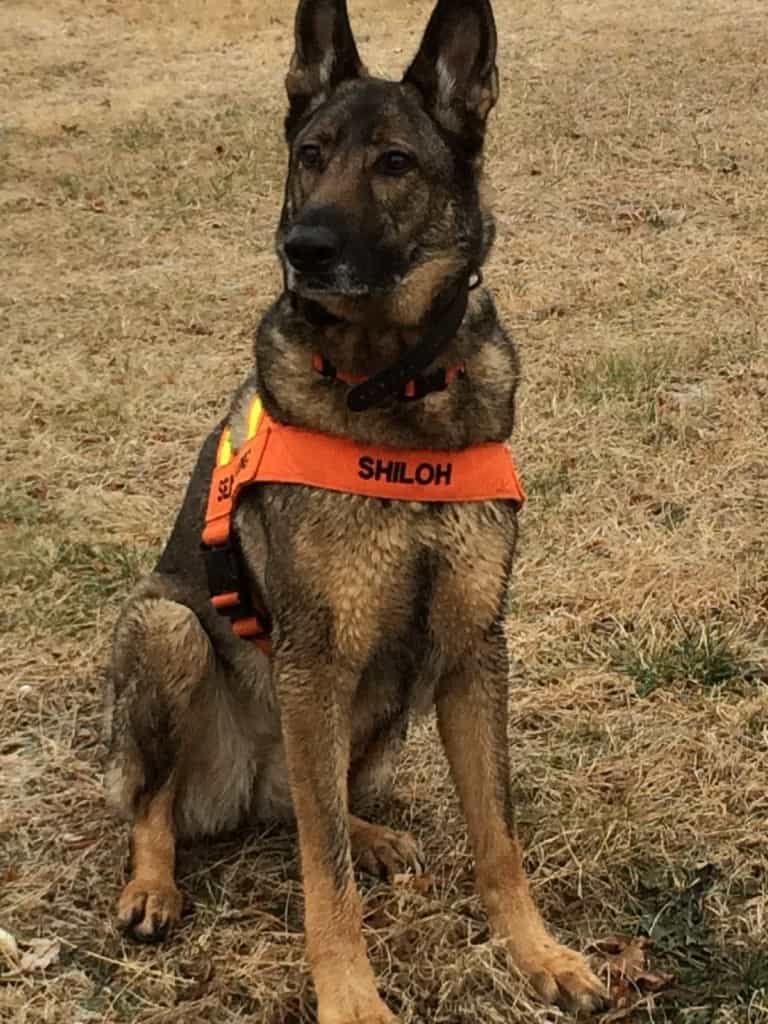
There are several kinds of search disciplines for K9s and their handlers, and this article discusses the two basic disciplines of all search dogs: trailing and area search. Northstar SAR has dogs and handlers trained in many SAR disciplines.
Trailing dogs use a scented article from the missing person and typically follow the path taken by that person. These dogs work on long lines with their handler following them and watching cues to understand how the dog is working the trail. When the person is found, the handler is always close behind the dog.
Area search dogs work off-leash in large areas. They hone in on any human in that area, but they can also search for a specific person in the area. When the dog finds someone, by following the freshest scent, she has to be able to ‘tell’ the handler about the find. This dog will either sit and bark so the handler can find the location, or the dog will come back to the handler (called ‘recall’) and ‘indicate’ that a find has been made. Then the dog leads to handler to the person (‘re-find’).
How does a dog tell you she has found someone? The most common trained indication is a sit or down position in front of the handler. Sometimes the best training method is to use what the dog does naturally. For example, my dog Coda naturally comes back to me then does a quick about-turn right in front of me and heads back to the found person, checking that I am following. She did this the very first time Northstar Chief, Diane, tested her at 11 weeks old.
Most people have heard of cadaver dogs, also called HRD for human remains detection dogs. The photo shows Shiloh, an experienced and multi-talented dog owned by Northstar SAR Chief Diane Stefanik. Shiloh is trained in both trailing and area search, and searches for living and not-living humans. In addition, Shiloh works on land and on water, which means she can scent submerged human tissue from the top of the water. Cadaver dogs are typically off-leash and able to search large land areas quickly, and are taken in boats to search the water. However, only some dogs are interested in the scent of human remains so it’s not possible to train any dog to do this type of search.
It’s really amazing watching these dogs work! It takes hundreds of hours each year to train a dog, and the handler must work those hours with the dog to develop a close working bond. Training never stops!
For more information on Northstar SAR, please see the website at www.northstarSAR.com.

